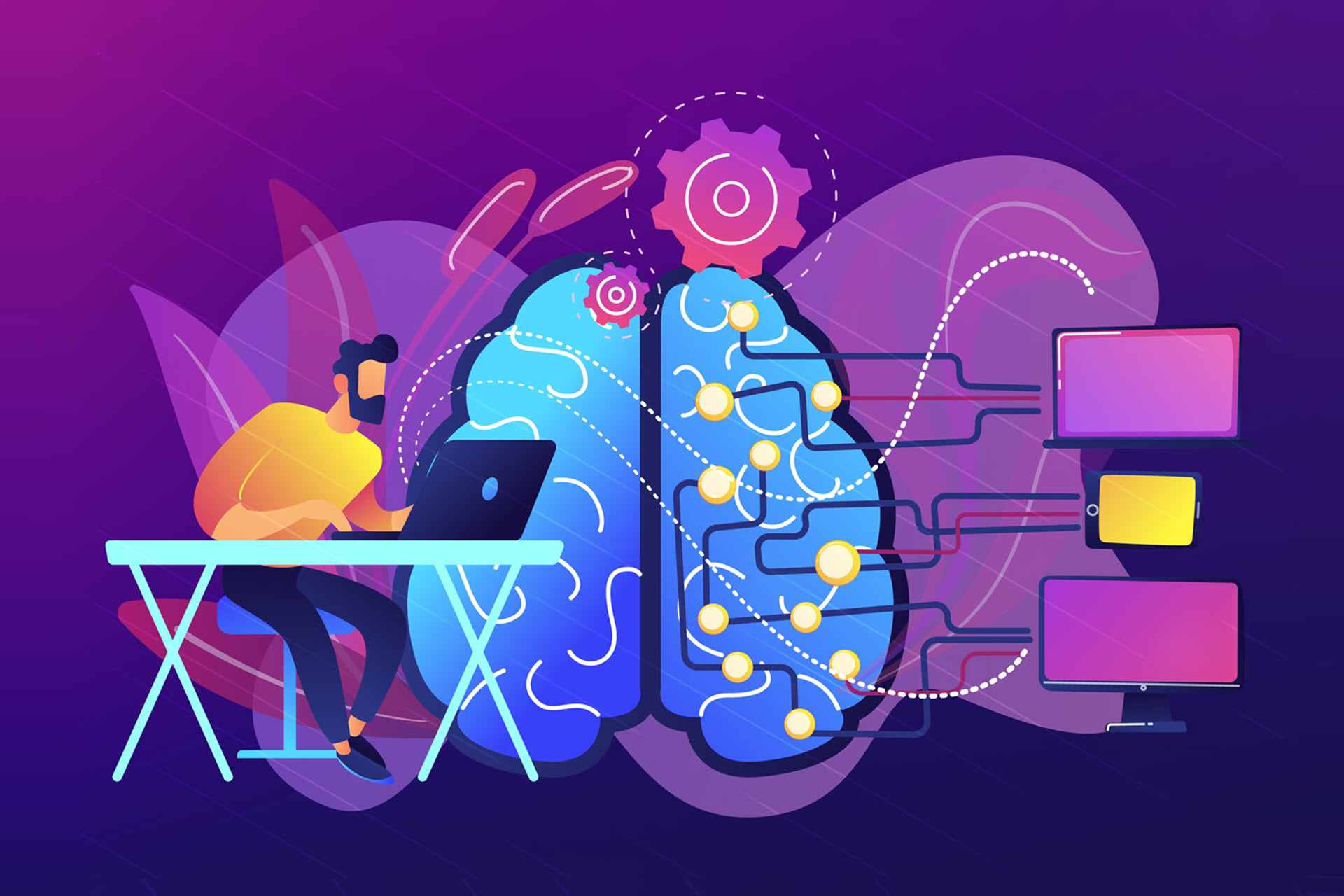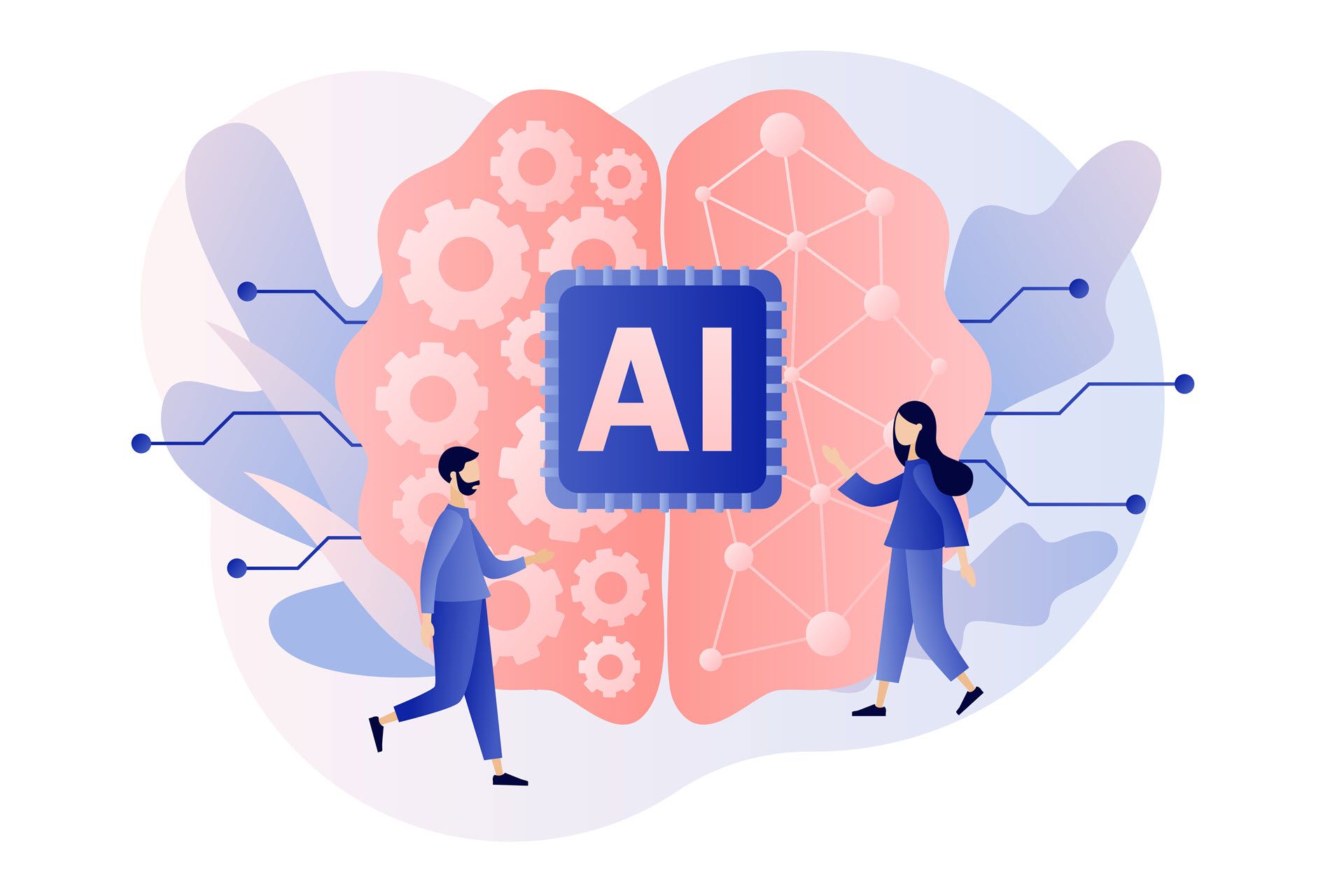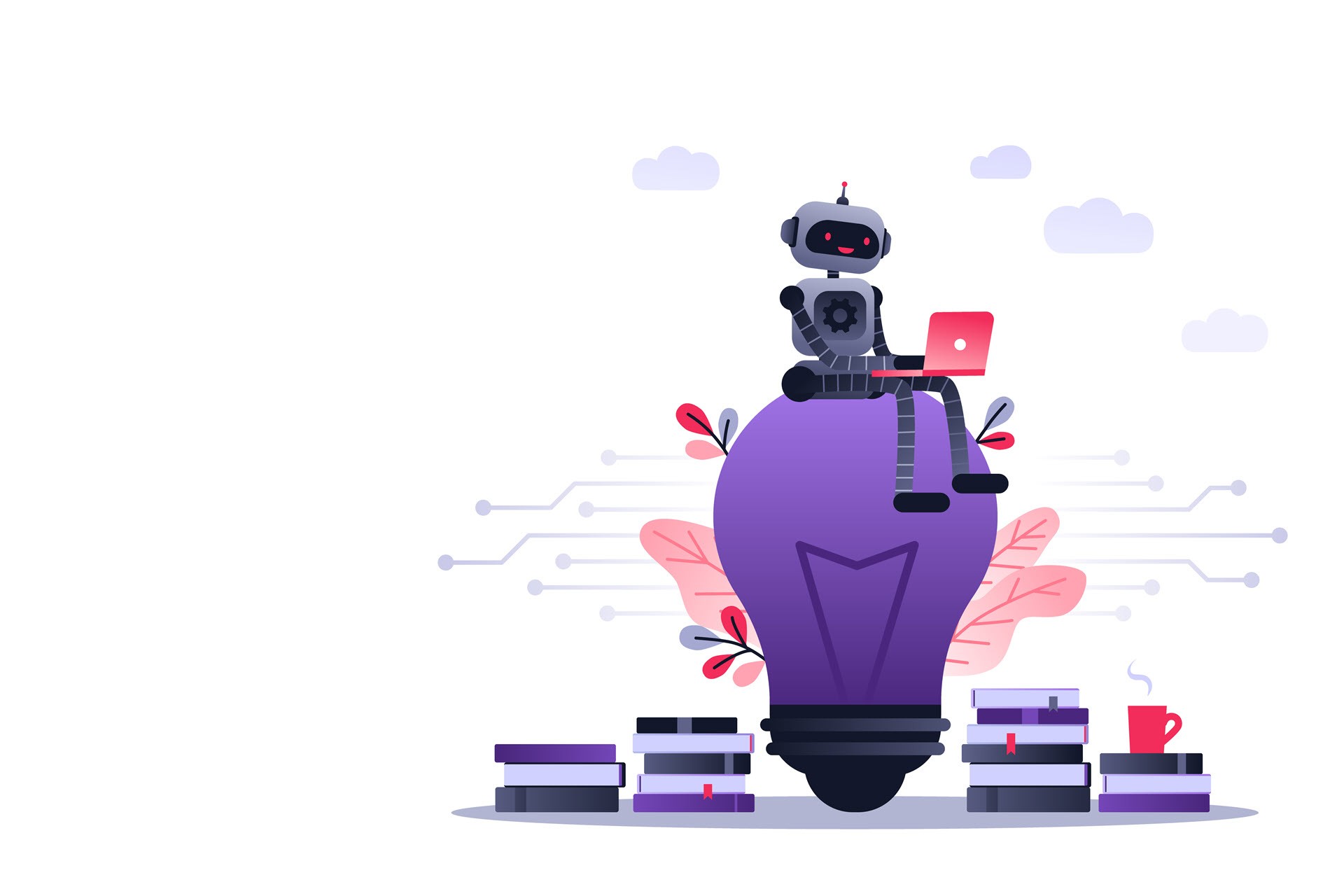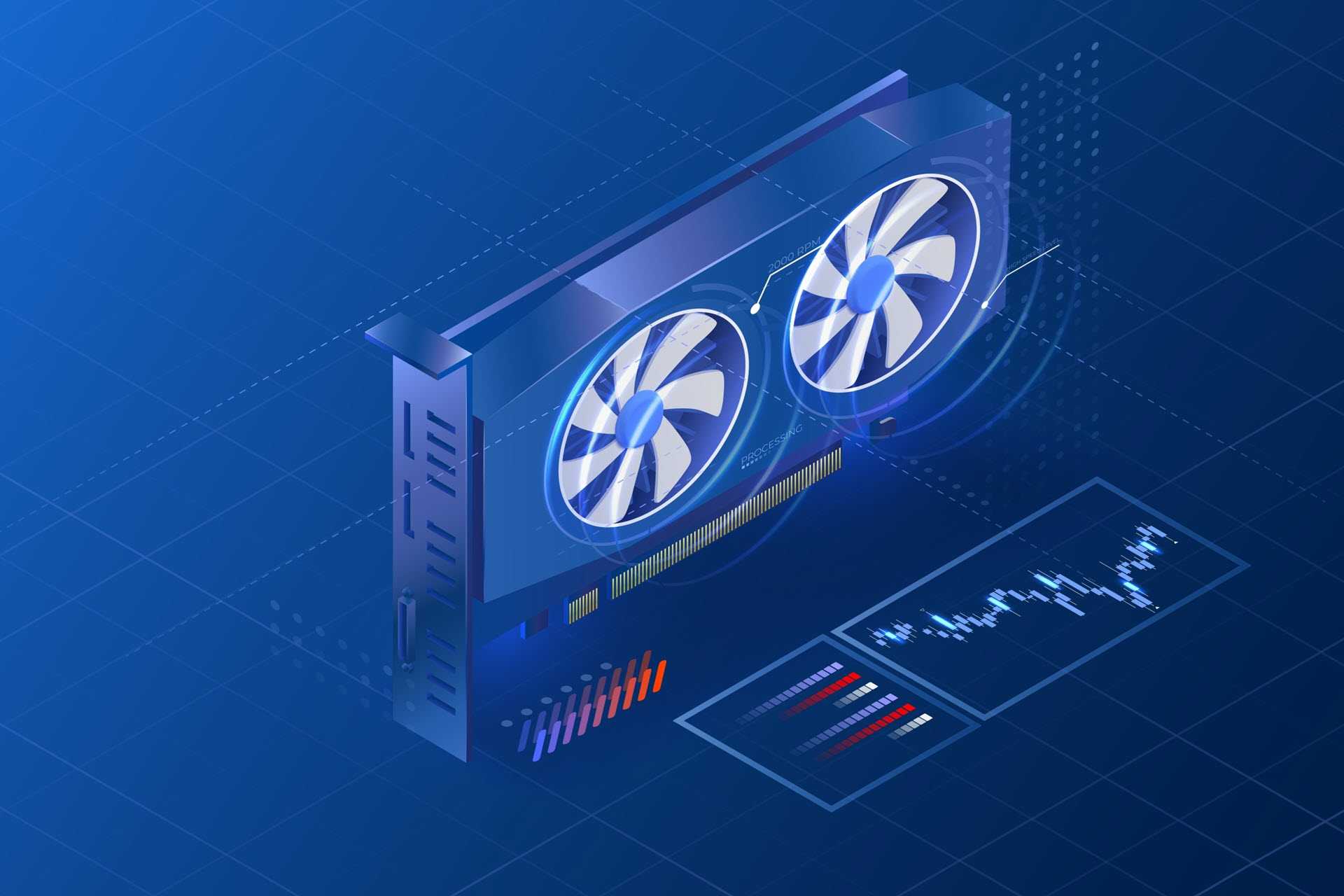After years of steady progress, artificial intelligence (AI) has evolved beyond a buzzword and has become an indispensable tool across most business sectors. Organizations in various industries are successfully using AI to deal with time-consuming tasks, data overloads, inconsistent decision-making, and the need for real-time insights.
This article presents a variety of real-world artificial intelligence examples that show how businesses use AI to boost efficiency and productivity. Read on to learn about the most popular uses of AI across different industries and see how versatile and impactful AI is when used in the right circumstances.
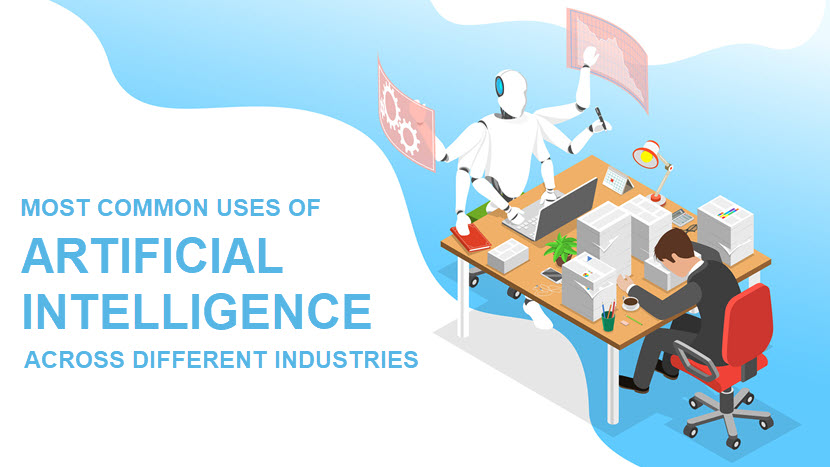
Artificial intelligence works by simulating the way biological neurons collaborate to process information and arrive at conclusions. Learn exactly how this process works in our articles on neural networks and deep nets (DNNs).
Examples of Practical Uses of Artificial Intelligence
Artificial intelligence improves operations and workflows by reliably automating routine tasks, analyzing vast volumes of data, and ensuring more consistent decision-making. These capabilities are crucial in most business sectors but have so far proved the most valuable in the following industries:
- Healthcare.
- Finance.
- Retail.
- Manufacturing.
- Education.
- Transportation.
- Media and entertainment.
- Energy.
- Cybersecurity.
Let's take a look at exactly how companies within each of these industries use AI to speed up and improve day-to-day work.
Check out the SpyFu case study to see how moving mission-critical AI workloads to phoenixNAP's Bare Metal Cloud enabled the company to eliminate performance bottlenecks and cut cloud costs by 50%.
Healthcare
AI is revolutionizing various aspects of patient care and having a massive impact on research and administrative tasks in the healthcare industry. Let's take a closer look at the most prominent examples of artificial intelligence in healthcare.
Medical Imaging and Diagnostics
Artificial intelligence is excellent at identifying patterns indicative of conditions like cancers, fractures, neurological issues, and autoimmune disorders.
Many healthcare providers use AI algorithms to analyze medical images such as X-rays, MRIs, CT scans, and ultrasounds. These systems assist radiologists and clinicians in detecting abnormalities and diagnosing diseases.
Healthcare organizations are also increasingly using AI models for patient monitoring. AI systems can analyze vast amounts of patient data (vital signs, lab results, etc.) to predict disease progression, treatment outcomes, and specific patient risks.
Drug Discovery and Medical Research
Many healthcare research institutions use artificial intelligence to accelerate the drug discovery process. Go-to uses of AI in this domain include:
- Simulating molecular interactions.
- Predicting drug efficacy.
- Identifying potential drug candidates.
AI algorithms quickly analyze large data sets to uncover new drug targets, optimize compound structures, and streamline clinical trials. The use of AI drastically speeds up research and reduces the time to market (TTM) for new therapies.
Personalized Medicine
AI enables healthcare providers to automatically generate personalized treatment plans for patients. These plans are tailored specifically to each patient and are based on the person's age, genetic makeup, medical history, and lifestyle factors.
The most common way to create personalized medicine plans is to use an AI system that analyzes diverse data sets that include genomic data, electronic health records (EHRs), and population health data. The AI then makes data-driven decisions to optimize treatment efficacy and patient outcomes.
Virtual Health Assistants
AI-powered chatbots and virtual assistants provide remote access to healthcare services and information. These systems are excellent at:
- Triaging symptoms.
- Providing on-the-spot medical advice.
- Offering remote consultations.
AI-based virtual health assistants provide immediate access to care and free up the workforce from routine and false emergencies. Some healthcare providers embed these assistants into wearable devices to monitor users' health status and detect anomalies.
Virtual health assistants also streamline administrative tasks such as appointment scheduling and medical billing. Automating these processes enables healthcare facilities to operate more efficiently and reduce operational costs.
Robotic Surgery
AI is transforming surgical procedures through robot-assisted surgery. AI systems enhance the precision of surgical instruments, reducing the chance of human error and improving surgery outcomes.
Additionally, some more routine surgeries can be performed solely by AI-powered robots. Robots execute precise, repetitive tasks (e.g., certain types of laparoscopic surgeries and minimally invasive procedures) with a high degree of consistency.
Check out our article on healthcare cyber security to learn about the most prominent threats in this sector and read up on CommonSpirit Health the second largest non-profit hospital chain in the U.S. as one of the prominent ransomware attack examples.
AI in Finance
Artificial intelligence has impacted various aspects of the finance industry, from customer service and risk management to asset trading and fraud detection. Below are the most prominent examples of how financial organizations use AI to improve efficiency and decision-making.
Learn about the applications of machine learning in finance.
Fraud Detection
AI algorithms are excellent at analyzing vast amounts of transaction data to detect patterns indicative of fraudulent activities, such as:
- Unauthorized transactions.
- Identity theft attempts.
- Money laundering.
As an extra benefit, AI systems adapt to novel fraud schemes and reliably identify suspicious behavior. These capabilities help financial institutions mitigate risks and protect their customers' assets.
Algorithmic Trading and Portfolio Management
AI-powered algorithms can analyze market data, news events, and economic indicators to execute trading strategies and help users manage investment portfolios. High-frequency trading (HFT) algorithms leverage AI to:
- Execute trades at lightning speed.
- Capitalize on market inefficiencies.
- Generate alpha (i.e., achieve returns that exceed a particular benchmark or market average).
We're seeing more commercial AI-based advisors that offer investment advice and portfolio management services. These systems analyze individual financial goals, risk tolerance, and preferences to provide optimal strategies to investor companies.
Robo-advisors are also becoming increasingly popular in personal finance management. These AI-driven platforms create and manage a personalized portfolio based on the investor's specific risk tolerance and goals, often at a lower cost than traditional financial advisors.
Predictive Analytics
AI-powered predictive analytics are vital in financial forecasting and decision-making. Financial institutions use AI to analyze historical data and predict future market trends, which helps businesses and investors make informed decisions based on in-depth forecasts of:
- Stock prices.
- Interest rates.
- Economic indicators.
AI-powered sentiment analysis tools are also gaining traction in the finance sector. These tools gauge market sentiment by analyzing data from social media, news articles, and other online sources. Financial institutions use that information to make better investment decisions and respond proactively to market changes.
Credit Scoring and Risk Assessment
Many financial institutions use AI models to analyze credit history and financial transactions to assess the borrower's creditworthiness and calculate credit scores. Using AI algorithms in this domain enables organizations to reliably:
- Predict default risk.
- Determine optimal lending terms.
- Automate credit decisions.
AI credit scoring models streamline the loan origination process and make it safer for all involved parties.
Customer Relationship Management (CRM)
AI-powered CRM systems analyze customer data, interactions, and preferences to help adopters with:
- Personalizing marketing campaigns.
- Improving customer segmentation.
- Enhancing customer engagement.
The smart use of AI systems enables financial organizations to anticipate customer needs, provide relevant services, and deliver targeted offers across multiple channels.
Regulatory Compliance and Anti-Money Laundering (AML)
AI technologies assist financial institutions in complying with regulatory requirements and detecting suspicious activities.
AI-powered compliance solutions automate regulatory reporting and monitor transactions for compliance with KYC (Know Your Customer) and AML regulations. Additionally, these systems reliably flag potentially suspicious behavior for further investigation, which helps organizations avoid costly penalties.
Customer Support Automation
Artificial intelligence is transforming customer support in finance with chatbots and virtual assistants. These AI-driven tools provide 24/7 customer service, handle common inquiries, resolve issues, and guide users through various financial services. Chatbots not only enhance customer satisfaction but also reduce operational costs for financial institutions.
Most adoptions of AI in finance require the use of supervised machine learning training, a technique we explore in detail in our guide to machine learning (ML).
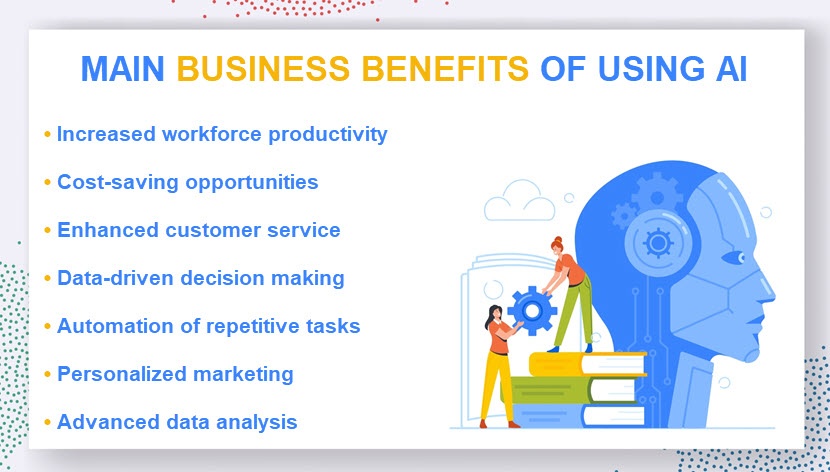
AI in Retail
The use of AI in the retail industry leads to more accurate and personalized shopping experiences, which helps companies boost both user acquisition and retention rates. Below are a few examples of how retailers use artificial intelligence.
Retail Analytics
AI-powered tools give retailers insights into sales performance, trends, and patterns that help make data-driven decisions. This information helps assess the effectiveness of sales strategies and identify growth opportunities.
AI tools also help analyze customer data to uncover valuable insights into shopping habits, preferences, and demographics. This analysis helps retailers tailor offerings and marketing strategies to better meet customer needs.
Customer Personalization
Many retail websites use AI algorithms to analyze customer data (e.g., past purchases, browsing behavior, money spent) and provide personalized product recommendations. This capability increases the likelihood of purchase by offering products that match the customer's preferences.
A better understanding of user preferences helps retailers accurately segment customers based on their behavior, likes, and dislikes. Companies then use that information to create personalized emails, ads, and promotions that increase engagement and conversion rates.
Inventory Management
One of the most prominent artificial intelligence examples in e-commerce is the use of AI to predict future demand for products. AI helps businesses optimize inventory levels, reduce stockouts, and minimize excess inventory by analyzing data such as:
- Historical sales data.
- External factors (e.g., seasonality or current economic conditions).
- Current market trends.
AI systems automatically reorder products based on real-time inventory levels and demand forecasts. That way, the system ensures that popular items are always in stock and that the business does not order products it does not need.
Visual Search and Augmented Reality
AI-powered visual search tools allow customers to search for products using images instead of text. By uploading a photo, customers can find similar items in the store, which enhances the shopping experience.
Augmented Reality (AR) systems are also a popular AI use case. AR applications enable customers to visualize products in their own environment while browsing. For example, furniture retailers use AR to show how a piece of furniture would look in a customer's home.
Customer Service
AI-driven chatbots handle customer inquiries, provide product information, and assist with purchases. Since they are available 24/7, these chatbots significantly improve customer service efficiency.
Additionally, advanced personalization techniques such as natural language processing (NLP) enable AI chatbots to better understand user feedback and sentiment. This analysis ties into customer personalization and helps further improve the customer experience. Sentiment analysis algorithms also effectively gauge user satisfaction levels and identify areas for improvement in service delivery.
Price Optimization
Many retailers use AI algorithms to adjust product prices based on current demand, competition, and inventory levels. That way, the adopter ensures competitive pricing, maximizes sales, and improves profit margins.
Some retailers also use AI to evaluate the performance of past promotions and determine the most effective strategies for future campaigns. That way, adopters get to optimize discount offers and further increase their return on investment (ROI).
In-Store Use of AI
AI is also impacting brick-and-mortar retailers. Many businesses use AI-powered smart shelves that monitor inventory levels with sensors or cameras. These shelves alert the staff when items need restocking to ensure products are always available for customers.
AI can also analyze in-store customer behavior, such as foot traffic patterns and dwell times. Retailers use this information to optimize store layouts and product placements, further enhancing the shopping experience.
Check out our article on the most common ecommerce security threats and see how businesses in the e-retail sector deal with these risks.
AI in Manufacturing
Manufacturers integrate AI-powered computer vision and robotics into manufacturing processes to optimize production, improve quality, and reduce costs. Below are a few specific examples of how AI is utilized in the manufacturing sector.
Predictive Maintenance
AI systems reliably monitor parameters such as vibration, temperature, and noise levels to identify patterns indicative of impending issues. This analysis enables proactive maintenance as AI systems predict equipment failures before they impact production.
Proactive equipment maintenance reduces downtime and maximizes the lifespan of equipment. It also lowers maintenance costs and improves overall operational efficiency.
Quality Control
AI-powered computer vision systems are excellent at inspecting products for defects. These systems analyze images and videos in real time to detect flaws such as cracks, deformations, and surface imperfections that are invisible to the human eye.
Automating the inspection process enhances accuracy and speed, reduces human error, and ensures consistent product quality. These benefits are particularly valuable in sectors where precision and reliability are critical, such as aerospace, automotive, and electronics manufacturing.
AI systems can also monitor workplace safety by detecting hazardous conditions and ensuring compliance with safety regulations. This capability significantly reduces the likelihood of accidents.
Supply Chain Optimization
Manufacturers often use AI to optimize supply chain operations. AI systems analyze vast amounts of data to forecast demand, manage inventory, and streamline logistics. AI also enhances logistics by optimizing delivery routes and schedules to ensure timely product distribution.
Machine learning algorithms reliably predict future demand based on historical data. This feature helps manufacturers maintain optimal inventory levels and reduce holding costs.
AI also helps identify and mitigate risks in the supply chain by predicting disruptions due to natural disasters or supplier issues. These predictions enable manufacturers to develop contingency plans and maintain business continuity.
Robotics
AI-powered robots are being increasingly used in manufacturing for tasks that require precision, speed, and repeatability. These robots help optimize designs, material usage, and process parameters, leading to faster production cycles and less material waste.
As an extra benefit, AI-powered robots learn and adapt to new tasks through machine learning, making them ideal for dynamic manufacturing environments.
More and more manufacturers are using AI-powered collaborative robots (so-called cobots) that work alongside humans to enhance productivity and safety. These robots perform repetitive and dangerous tasks, such as welding, assembly, and material handling. Meanwhile, human workers get to focus on more complex and creative activities.
Production Planning and Scheduling
Manufacturers use AI algorithms to analyze production data, resource availability, and order priorities to create more efficient production schedules. This analysis helps manufacturers meet delivery deadlines, reduce lead times, and minimize production delays.
AI adapts to real-time changes and issues, such as machine breakdowns or urgent orders. If something goes wrong, the AI system dynamically adjusts schedules and resource assignments.
Smart Factories and Industry 4.0
AI is vital to the Industry 4.0 movement (so-called smart manufacturing), which focuses on creating smart factories with interconnected systems and continuous data exchanges.
In Industry 4.0 environments, AI integrates with IoT devices and sensors to monitor and control the manufacturing process. This integration enables real-time decision-making and autonomous production adjustments, which lead to more efficient and agile manufacturing operations.
Learn how the combined use of IoT and edge computing enables companies to process vast volumes of data at the network's edge.

AI in Transportation
AI has a massive impact on the transportation industry. AI-powered systems enhance safety and efficiency within this sector while also positively affecting overall sustainability. Let's look at the most prominent examples of AI use within this industry.
Autonomous Vehicles
AI enables companies to create self-driving cars and trucks. These vehicles use sensors, cameras, and machine learning algorithms to navigate the streets and make driving decisions.
AI-powered vehicles reliably detect obstacles, interpret traffic signals, and adapt to changing road conditions. These forms of transportation significantly reduce the risk of human error and improve road safety.
AI is also valuable for fleet management. Fleet managers often use AI to plan efficient routes, adjust to changes, schedule maintenance, and monitor compliance with safety regulations. These capabilities lead to cost savings, improved operational efficiency, and enhanced safety.
Smart Traffic Management
AI-powered traffic management systems analyze data from cameras, sensors, and GPS devices to monitor real-time traffic conditions. By predicting traffic patterns and adjusting traffic signals accordingly, these systems alleviate congestion, reduce travel times, and lower emissions. AI can also provide real-time traffic updates to drivers, helping them choose the most efficient routes.
Public Transportation Optimization
AI is helping enhance public transportation systems by analyzing passenger data and travel patterns. This information helps transit authorities optimize routes, schedules, and capacities to ensure efficient and reliable services.
As for the passenger side of things, AI provides real-time information about arrival times, delays, and alternative routes, improving the overall experience.
Transportation companies also often use AI to monitor the health of public transport vehicles and predict potential failures before breakdowns occur. This precaution reduces downtime and ensures a reliable service for passengers.
Autonomous Drones
AI enables companies to create and operate autonomous drones for various transportation tasks, including:
- Package delivery.
- Traffic monitoring.
- Aerial surveying.
These drones use AI to navigate surroundings, avoid obstacles, and optimize flight paths, offering a fast and efficient alternative to traditional remotely operated drones.
Are you planning to run AI workloads on in-house servers? You'll need a powerful CPU, so check out our reviews of the market's best AI processors.
AI in Education
AI benefits the education sector by enabling new teaching methods and personalizing learning experiences. Below are a few specific examples of how AI is utilized in the education industry.
Personalized Learning
Educational institutions use AI algorithms to analyze student performance data and tailor learning experiences to individual needs. By identifying the strengths, weaknesses, and learning preferences of each student, AI helps educators with:
- Creating custom lesson plans.
- Adjusting the pace of instruction.
- Recommending additional resources.
This personalized approach helps students learn more effectively and remain engaged. Monitoring student performance and engagement also helps identify those at risk of falling too far behind.
Intelligent Tutoring Systems
AI-powered tutoring systems provide students with personalized assistance outside the classroom. Intelligent tutoring systems track progress and provide instant feedback, which helps students master concepts at their own pace.
AI-based tutoring systems also enhance accessibility in education by providing tools for students with disabilities. Speech recognition, text-to-speech, and language translation technologies make learning materials accessible to all students.
Additionally, AI helps students with career planning by analyzing their skills, interests, and academic performance. AI-driven platforms suggest suitable career paths, internships, and educational opportunities, aiding students in making informed decisions about their futures.
Automated Grading and Assessments
Some educators use AI to automate the grading process for assignments, quizzes, and exams. AI can assess written responses, code submissions, and even complex problem-solving tasks.
Automatic grading saves valuable time for teachers while providing consistent and objective evaluations. These grading systems also provide near-immediate feedback to students, allowing them to better learn from their mistakes.
Virtual Classrooms
Virtual classrooms powered by AI create a more interactive and responsive learning environment. AI enhances virtual classrooms by facilitating real-time interactions, creating virtual assistants, and offering personalized support. AI-driven platforms also manage administrative tasks and analyze participation patterns.
Content Creation
AI assists educators in creating and curating educational content. By analyzing vast amounts of information, AI can generate summaries, design interactive activities, and recommend relevant resources. These capabilities help teachers develop high-quality instructional materials and keep content updated with the latest knowledge.
Day-to-Day Administration
Many educational institutions use AI systems to streamline administrative tasks such as scheduling, enrollment, and communication. AI-powered systems also help with:
- Managing student records.
- Automating routine inquiries.
- Providing insights into school operations.
Boosted efficiency reduces administrative burdens on educators and allows them to focus more on teaching and supporting students.
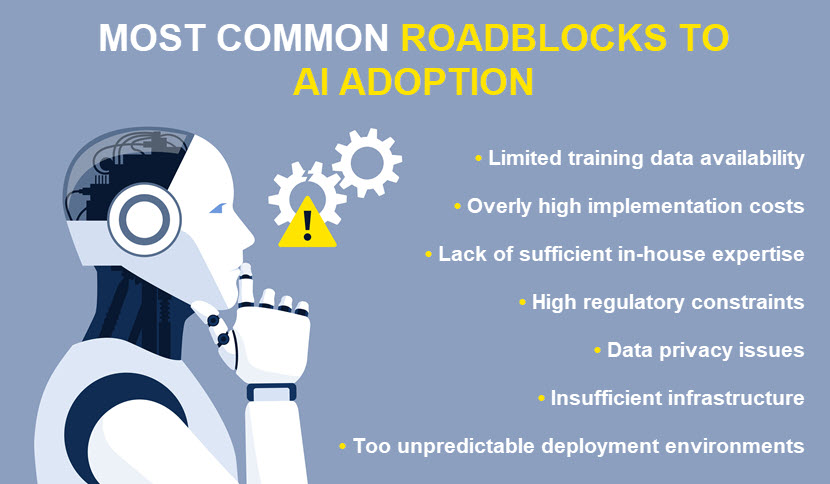
AI in Media and Entertainment
AI not only helps entertainment companies better understand and cater to audiences but also opens up new possibilities in storytelling and production. Below is a look at the most common ways businesses in the entertainment industry use AI technologies.
Enhanced Audience Analytics
AI-driven analytics tools provide deep insights into audience behavior and preferences. By analyzing vast data sets, AI tools predict trends and suggest content that is likely to become popular. Media companies use these insights to make data-driven decisions on content creation and marketing strategies.
Personalized Content Recommendations
Many companies use AI algorithms to analyze user behavior, preferences, and viewing history to provide personalized content recommendations. All major streaming platforms use this strategy, including Netflix, Spotify, and YouTube. These platforms use machine learning to suggest movies, TV shows, music, and videos most likely to interest the user.
For even more accuracy, AI can analyze audience feedback from social media, reviews, and surveys to better understand audience preferences. This information helps entertainment companies tailor content to better meet audience expectations and improve marketing strategies.
Content Creation
AI tools assist in content creation by generating ideas, writing texts, and even composing music. For example, AI can analyze successful storylines and generate plot suggestions for movies and TV shows.
AI also enhances visual effects (VFX) and animation by automating complex processes. Machine learning algorithms can generate realistic textures, simulate natural movements, and create lifelike characters. AI also assists in post-production tasks such as:
- Color correction.
- Object removal.
- Scene reconstruction.
AI tools aid in music and sound production by analyzing audio patterns and assisting in mixing, mastering, and composing music. Generative AI can create background scores, suggest chord progressions, and even author entirely new pieces of music.
Interactive Experiences
AI enables companies to create interactive and immersive entertainment experiences, such as virtual reality (VR) and augmented reality (AR) apps. VR and AR provide users with engaging and immersive environments, whether it's a VR game, an AR app for exploring historical sites, or an interactive movie that changes based on audience choices.
AI-powered voice and speech recognition technologies are also becoming integral to the entertainment industry. These technologies enable voice-controlled interfaces, virtual assistants, and interactive storytelling experiences. For example, smart speakers and virtual assistants like Alexa and Google Assistant use AI to recommend music, news, and podcasts based on user commands.
Deepfake Technology
While somewhat controversial, AI-powered deepfake technology is being explored for creating realistic visual effects and virtual actors. This technology can bring historical figures to life in documentaries or create lifelike CGI characters in movies and TV shows.
Gaming
AI is revolutionizing the gaming industry by creating more intelligent and responsive non-player characters (NPCs). Machine learning algorithms enable NPCs to react to player actions and adapt their behavior, which makes games more engaging.
AI also assists in procedural content generation. Many game development teams use AI tools to create diverse and dynamic environments that provide a unique experience for each player.
Learn about dedicated servers for gaming and see how these servers enable players to customize their gaming environments.
AI and Energy
The integration of AI technologies enables energy companies to improve operational performance, reduce costs, and make smarter decisions. Let's look at how AI is making a difference in the energy industry.
Smart Grid Management
AI enhances the management of smart grids by optimizing the balance between electricity supply and demand in real time. AI algorithms analyze data from various sources, such as weather forecasts, energy consumption patterns, and grid conditions, to predict energy demands and adjust power distribution accordingly. As a result, smart grids become more stable and efficient.
AI also improves the integration of renewable energy sources (e.g., solar or wind) by providing accurate energy production forecasts. ML models analyze weather data, historical performance, and other relevant factors to predict how much energy renewable sources will generate. These insights help grid operators plan for fluctuations in energy supply and ensure a more stable and reliable energy grid.
Energy Consumption Optimization
Smart meters and IoT devices collect vast data on energy usage, which AI systems can analyze to suggest energy-saving measures like:
- Adjusting heating and cooling systems.
- Scheduling energy-intensive tasks during off-peak hours.
- Replacing inefficient appliances.
These recommendations help consumers and businesses optimize their energy consumption and reduce running costs.
AI also plays a significant role in managing energy storage systems. By predicting energy production and consumption patterns, AI can optimize the charging and discharging cycles of batteries. This optimization ensures that energy storage systems are used efficiently while ensuring there's a reliable energy supply during peak times.
Energy Trading
AI systems enhance energy trading by analyzing market data, historical trends, and external factors to predict price movements and optimize trading strategies.
AI-powered energy trading platforms execute trades at optimal times, maximizing profits and minimizing risks. Additionally, AI can assess market conditions and provide insights into future market trends.
AI-powered platforms can also engage with energy consumers by providing real-time feedback on their energy usage. These platforms use gamification and rewards to encourage users to adopt more sustainable habits, helping users save money while promoting energy conservation.
Grid Resilience
AI enhances the security and resilience of energy grids by reliably detecting and responding to cyber threats and physical disruptions. ML and AI algorithms can identify unusual activities in real time, enabling rapid responses to protect critical infrastructure.
AI can also simulate different scenarios to assess the grid's resilience and develop strategies to mitigate potential risks.
Autonomous Energy Systems
AI enables companies to develop autonomous energy systems that operate and manage themselves with minimal human intervention. These systems use AI to monitor conditions, make decisions, and optimize performance.
The most notable examples of these systems are autonomous microgrids that independently manage energy production and distribution within a localized area.
As more and more businesses start using AI, the global artificial intelligence market is about to explode. The AI market, which was estimated at $196.63 billion at the end of 2023, is expected to reach an incredible $1,811.8 billion by 2030.
AI in Cybersecurity
AI is revolutionizing the cybersecurity industry by enabling more proactive, efficient, and effective threat detection and response. Artificial intelligence also plays a key role in preventing cyber attacks as AI systems reliably analyze the attack surface and identify potential entry points for cybercriminals. Let's look at the most popular uses of AI in the cybersecurity industry.
Threat Detection and Analysis
AI enhances threat detection by analyzing data to identify unusual patterns indicative of cyber threats. Artificial intelligence systems reliably analyze network traffic, user behavior, and system logs.
AI and ML algorithms detect anomalies and potential security breaches by comparing current activity against historical data. This strategy enables faster and more accurate identification of malware, phishing attempts, and other malicious activities.
AI significantly enhances user authentication with advanced biometric recognition and behavioral analysis techniques. AI systems analyze patterns in typing speed, mouse movements, and login times to help ensure correct user identities. This approach adds an extra layer of security, making it more difficult for unauthorized users to gain access to systems.
Automated Response and Incident Management
AI-driven cybersecurity systems automatically respond to detected threats by taking the following steps:
- Isolate affected systems or network segments.
- Block malicious IP addresses.
- Execute predefined response protocols or take self-determined remediation steps.
This level of automation reduces response times and limits the damage caused by successful breaches. AI also helps humans during incident management by prioritizing threats, providing detailed analysis, and recommending optimal mitigation steps.
Vulnerability Management
AI assists in vulnerability management by scanning systems and apps for vulnerabilities and misconfigurations. These systems are excellent at both detecting known and novel flaws.
AI algorithms prioritize vulnerabilities based on their severity, potential impact, and exploitability. This information helps security teams focus on the most critical issues and apply patches more efficiently.
Want to perform some in-house vulnerability assessments? Check out these tried-and-tested vulnerability assessment tools that enable you to check a system for weaknesses.
Threat Intelligence
AI-based cybersecurity tools process vast amounts of threat intelligence data from various sources, including dark web forums, social media, and security feeds. By analyzing this data, AI identifies emerging attack vectors, tracks the latest criminal activities, and provides actionable insights to security teams.
AI can also predict potential security incidents by analyzing historical data and identifying trends that precede cyber attacks. This capability allows security teams to implement precautions before an attack occurs, reducing the likelihood of successful breaches.
For more ideas on how AI can be used to optimize business processes, check out our guide: Artificial Intelligence (AI) in Business.
A Truly Era-Defining Technology
As demonstrated by the artificial intelligence examples above, the transformative impact of AI is reshaping most major industries. As the tech continues to evolve, AI will only further challenge traditional ways of doing business. Get on board with this trend and start using AI to speed up work, improve productivity, and keep up with competitors.
